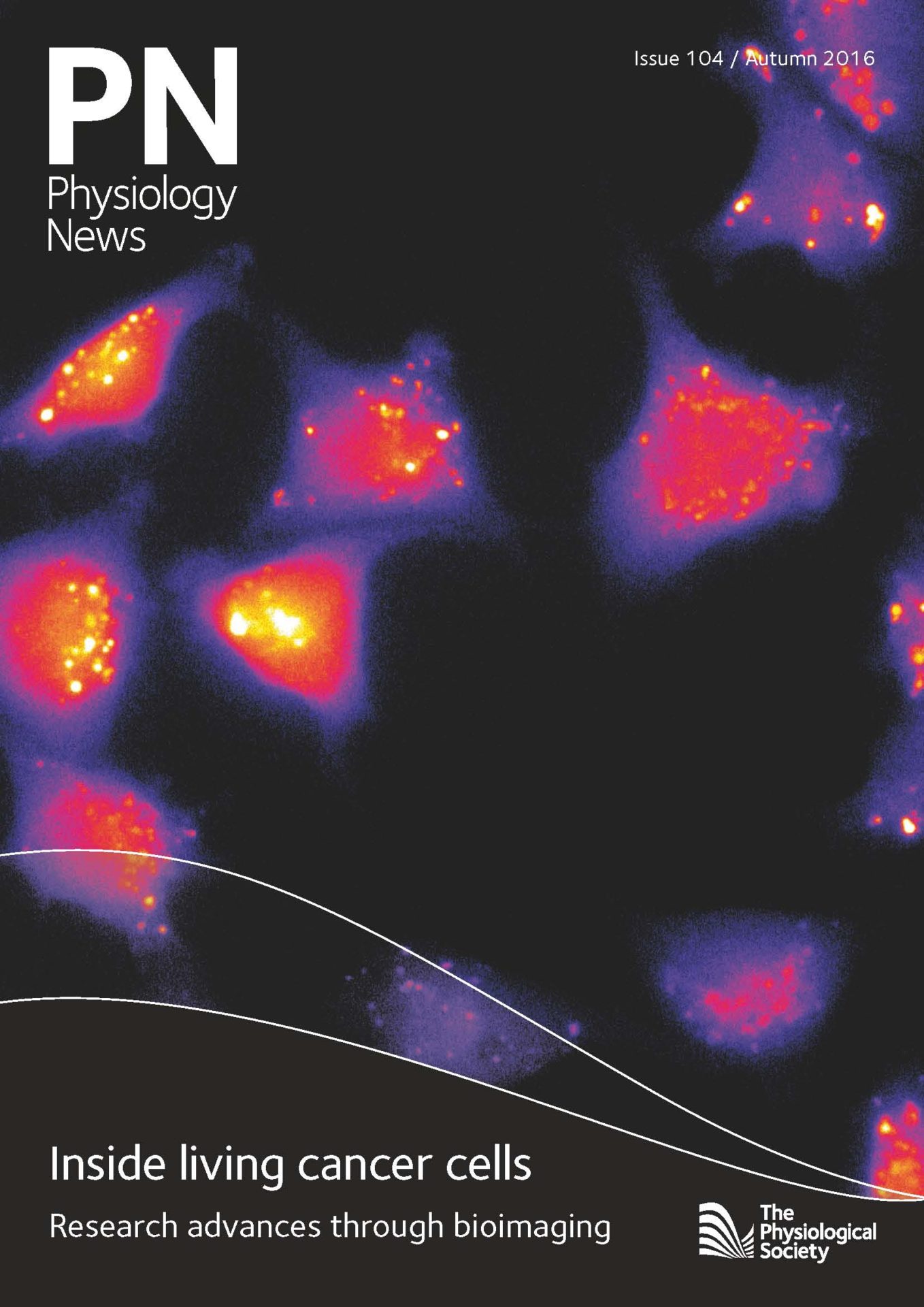
Physiology News Magazine
Editorial
News and Views
Editorial
News and Views
Karen Doyle
Lecturer, Department of Physiology, NUI Galway
https://doi.org/10.36866/pn.104.5
In this edition of Physiology News, we have a special feature focusing on research advances through bioimaging, particularly in the area of cancer, with contributions from some of the speakers at The Physiological Society’s topic meeting, Advances in Bioimaging, in University of Warwick in August. Tim Witney, one of the organisers of the meeting, explains his groups interest in developing new imaging agents to study cancer and the molecular and biochemical markers that could enable prediction of drug resistance, facilitating improved targeted therapeutics for cancer sufferers. One of Tim’s images graces the front cover of this issue. Adam Shuhendler uses activatable molecular imaging nanoprobes, including reactive oxygen species-activated and caspase-3-activated probes that may lead to earlier detection of disease and enable earlier prediction of the therapeutic effect of cancer treatments in patients. Kurt Anderson, talks of the development of newer, better, fluorescent biosensors that can be used to detect disease-related conformational changes in proteins in vivo through fluorescence resonance energy transfer (FRET). Recent developments have enabled more extensive use of FRET-based biosensors in pre-clinical cancer models, enabling characterisation of drug response in tumours.
We have an article from Tilli Tansey describing the life and career of Henry Newell Martin – a very celebrated experimental biologist, founder member of The Physiological Society and a champion of the fledgling Journal of Physiology during his short life. Additionally in this issue, in continuum with the last issue, we have an insight into the postdoctoral experiences in Cambridge of Mordecai Blaustein. This engaging article reminisces about the seminal experiments that unravelled the existence of the sodium-calcium exchanger (NCX) in the 1960s. It exudes the enthusiasm and excitement of discovery, amusing insights and tales of friendship with mentors and contemporaries in a time of electrophysiology breakthrough that has had such huge impact on physiology generally.
In this bumper packed issue, we also get insight into questions such as what a space physiologist does (Julia Attias), and if there really are any benefits to isotonic energy drinks when running a marathon (David Howells and Ron Maughan). We also hear from the new editor-in-chief of Experimental Physiology, Mike Tipton, who describes his work on extreme environmental physiology, and informs us (amongst many things) of how long to maintain a search for people lost at sea, given what is known about hope of resuscitation at different water temperatures.
There is an Irish emphasis in this issue (as I am the guest editor, and Irish, it is only fitting). Roger Thomas has a rapid report on the recent Dublin meeting of The Society in July, held in partnership with the American Physiological Society. The meeting was a great success with 1,200 attendees, excellent science, great views of Dublin city and mountains from the top floor of the Convention Centre, and thankfully very little rain. There is also an article on the past and present of physiology in the National University of Ireland, Galway (NUI Galway), my work abode (you have to take your publicity opportunities when you get them).
Post-Brexit vote, shock reverberates throughout the physiology community in Britain and beyond. Many of us fear that Brexit may create barriers to scientific collaboration, co-operation, endeavour and discovery in Europe as a whole. Gerta Vrbova’s letter to the editor gives voice to her concerns, now that the vote for Brexit is a reality. In particular, she highlights her concerns that Brexit threatens the freedom of movement that underpins scientific co-operation. In a historical piece, she also highlights the negative impact of policies in Germany in the 1930s and 1940s on scientific endeavour and the exemplary efforts of AV Hill and other members of the international scientific community to rescue scholars at risk of persecution. However, on a positive note, the new formal link between our (The) Physiological Society, and the Scandanavian and German Physiological Societies is a very positive and welcome development. At least we have Europhysiology to look forward to in 2018.
This is my first attempt at guest editing – if you spot any mistakes, please send your letter of complaint to Roger, who will be back in the hot seat in the next issue!
